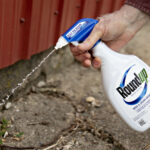The strong winds that pushed wildfires across nearly a million acres of the bone-dry Texas Panhandle were easing early on Thursday, March 16, but in Oklahoma, the fire danger was picking up.
A series of wind-whipped grass fires broke out Wednesday in Oklahoma, charring more than 4,000 acres and briefly threatened homes near Oklahoma City.
Thursday morning, most of the state was under a red flag warning – meaning a critical danger of fires – because of the dry air pushing into the region and the forecast of 20-25 mph winds, the National Weather Service said.
In Texas, where 50 mph wind gusts had swept a line of flames toward six Panhandle cities on Wednesday, the winds had shifted by Thursday morning and dropped below 10 mph.
“Right now, the fire is contained,” said Lipscomb County Sheriff’s dispatcher Jay Johnson, whose office had urged nearly 3,000 residents in the far northern county to evacuate the day before. “The wind has shifted and they’ve lit a backfire to get the fire burning back on itself.”
Authorities said the fires had traveled as far as 40 miles to the northeast on Wednesday.
The winds, which blew away ash and created sandstorms, were the strongest since wildfires started racing across the plains northeast of Amarillo on Sunday. Eleven people have died, more than 840,000 acres have burned, and animal health officials have estimated the number of dead horses and cattle at 10,000.
“When fire is advancing at 40 mph, you can’t put it out,” Borger Fire Chief Gayland Darnell said. “It would be like trying to stop a tornado.”
Gov. Rick Perry toured the area Thursday.
In Oklahoma, already under a burn ban because of fire outbreaks in recent months, 14 fires raged Wednesday from near Lawton, in the southwest, to west of Tulsa in the northeast, said Dale Armstrong, a fire information officer.
The largest of those fires burned about 3,000 acres near Moore, southeast of Oklahoma City, forcing the evacuation of 30 homes for several hours Wednesday, Armstrong said.
Wildfires have also broken out in western Kansas, where 14,000 acres burned Wednesday in Hodgeman County.
“It’s dry. It’s way too dry,” said Joy Moser, spokeswoman for the Kansas Division of Emergency Management. “We haven’t had anything like this in years.”
In Texas, fires have consumed about 3.7 million acres and nearly 400 homes since late December.
Firefighters in Texas were battling 10 major blazes Wednesday and responded to more than 200 new fires for a second consecutive 24-hour period. The Panhandle got some relief Wednesday afternoon with brief rain in the Borger and Pampa areas, overcast skies and higher humidity.
In their efforts to quell the wildfires, some departments have used soapy water because it sticks to vegetation better and doesn’t evaporate as quickly. Firefighters also have set back fires and used bulldozers to clear land in an effort to rob advancing fires of fuel. Helicopters have dropped hundreds of thousands of gallons of fire retardant and water.
In the sparsely populated rural Panhandle, the mostly flat terrain combined with grasses and some brush that can fuel fires contribute to quickly advancing flames.
“The problem is they can spread over such a wide area quickly, exponentially, it makes it hard to get a handle on it,” said Frederick.
Associated Press writers Terry Wallace and Anabelle Garay in Dallas contributed to this report.
Was this article valuable?
Here are more articles you may enjoy.

 OpenAI And Microsoft Sued Over Murder-Suicide Blamed on ChatGPT
OpenAI And Microsoft Sued Over Murder-Suicide Blamed on ChatGPT  Bayer Gets Supreme Court Hearing in Challenge to Roundup Suits
Bayer Gets Supreme Court Hearing in Challenge to Roundup Suits  Singer’s Elliott Sued by PE Firm in Escalating Fight Over Money
Singer’s Elliott Sued by PE Firm in Escalating Fight Over Money  Billionaire NFL Owner Suing Over Billboards Near His SoFi Stadium
Billionaire NFL Owner Suing Over Billboards Near His SoFi Stadium 